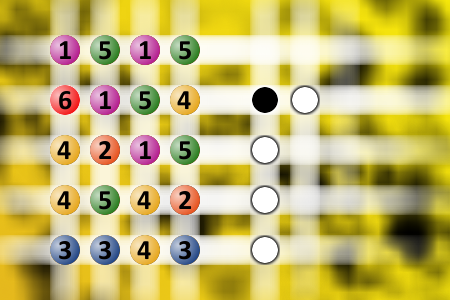What a winning combination?
The computer chose a secret code (sequence of 4 digits from 1 to 6). Your goal is to find that code. Black circles indicate the number of hits on the right spot. White circles indicate the number of hits on the wrong spot.
Fish Heads
A customer at Green's Gourmet Grocery marveled at the proprietor's quick wit and intelligence.
"Tell me, Green, what makes you so smart?"
"I wouldn't share my secret with just anyone," Green replies, lowering his voice so the other shoppers won't hear. "But since you're a good and faithful customer, I'll let you in on it. Fish heads. You eat enough of them, you'll be positively brilliant."
"You sell them here?" the customer asks.
"Only $4 apiece," says Green.
The customer buys three. A week later, he's back in the store complaining that the fish heads were disgusting and he isn't any smarter.
"You didn't eat enough, " says Green. The customer goes home with 20 more fish heads. Two weeks later, he's back and this time he's really angry.
"Hey, Green," he says, "You're selling me fish heads for $4 apiece when I can buy the whole fish for $2. You're ripping me off!"
"You see?" says Green. "You're getting smarter already!"

